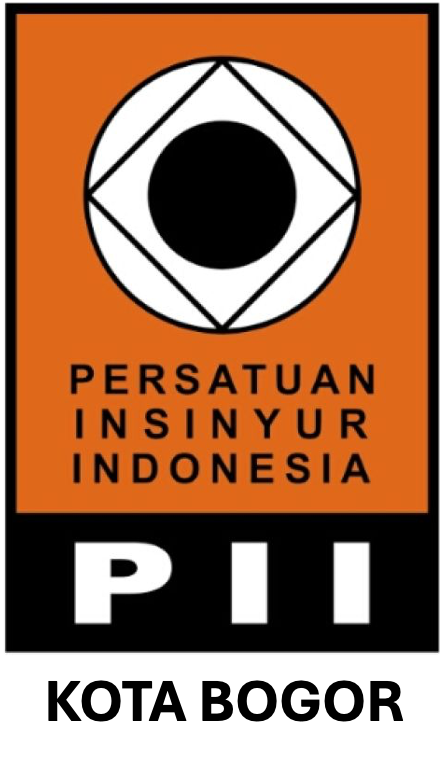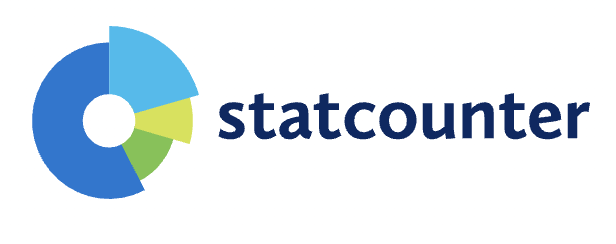Analysis of Recharge Potention in Upper Cisadane Watershed
Abstract
ABSTRACT
Human disturbance such as land use changes, urbanization, and deforestation degrade Upper Cisadane Watershed. It also causes degradation of recharge area, decrease infiltration and increase runoff. The aims of this research were to (1) identify the criticality of recharge area; and (2) analyze the potential of water recharge in Upper Cisadane Watershed. The criticality of recharge area had been identified refers to regulation of the Minister of Forestry, Republic of Indonesia Number: P.32/MENHUT-II/2009 by scoring and overlaying of slope, soil type, rainfall, and land use map. The amount of water recharge potential was predicted by the equation issued by IWACO and WASECO (1990).
The result showed that distribution of criticality of recharge area in Upper Cisadane Watershed in 2006, 2009, and 2013 were: (1) good: 24.7%, 24.7%, 23.6%; normal: 6.9%, 6.2%, 3.7%; (3) ranging critical: 17.9%, 17.8%, 19.4%, (4) rather critical: 25.0%, 24.9%, 30.7%; (5) critical: 23.9%, 24.5%, 22.0%; and (6) very critical: 1.9%, 2.0%, 0.7% respectively. The magnitude of the potential of water recharge on average in the recharge area was in good condition; 154.5 x 106 m3, normal; 33.9 x 106 m3, ranging critical; 94.6 x 106 m3, rather critical; 130.9 x 106 m3, critical; 98.2 x 106 m3, very critical; 6.2 x 106 m3. Upper Cisadane Watershed has a potential of annual water recharge was 511.7 x 106 to 569.2 x 106 m3/year or around 14% - 15.6% of total rainfall, with an average change in the potential of water recharge from the simulation based on the condition of recharge area in 2006-2009 decreased -0.04%, in 2009-2013 decreased -3.2% and in 2006-2013 decreased -3.3%.
Keywords: recharge area, infiltration, runoff, criticality.
Downloads
References
[BP DAS] Balai Pengelolaan Daerah Aliran Sungai Citarum-Ciliwung. 2010. Laporan Peta Penggunaan Lahan, Peta Administrasi, Peta Jenis Tanah DAS Cisadane. Bogor [ID]: Kementrian Kehutanan. Direktorat Jenderal Bina Pengelolaan Daerah Aliran Sungai Citarum-Ciliwung.
[USDA] United Statis Devolopment of Agricultural. 1986. Urban hydrology for small watersheds. TR-55. Second ed. Natural Resources Conservation Service.
Arsyad S. 2006. Konservasi Tanah dan Air. Bogor [ID]: IPB Pr.
Bonta JV. (1997). Determination of watershed curve number using derived distributions. J Irrigation and Drainage Engineering 123 (1): 28-36.
Canters F, Chormanski J, Van de Voorde T, Batelaan O. 2006. Effects of Different Methods for Estimating Impervious Surface cover on Runoff Estimation at Catchment Level. In Proceedings of 7th International Symposium on Spatial Accuracy Assessment in Natural Resources and Environmental Sciences, Lisbon, Portugal. pp. 557–566.
Dong L, Xiong L, Lall U and Wang J. 2015. The effects of land use change and precipitation change on direct runoff in Wei River watershed, China. J Water Science & Technology 71 (2): 289-295.
Fan F, Deng Y, Hu X and Weng Q. 2013. Estimating composite curve number using an improved SCS-CN method with remotely sensed variables in Guangzhou, China. J Remote Sens 5 (3):1425-1438.
Hawkins RH. 1998. Local Sources for Runoff Curve Numbers. In Proceedings of 11th Annual Symposium of the Arizona Hydrological Society, Tucson, AZ, USA.
Iwaco-Waseco dan PU 1990. West Java Provincial Water Sources Master Plan for Water Supply, Bandung Hydrological Study. Government of Indonesia. Ministry of Public Works, Jakarta.
Kementerian Kehutanan 2008. Laporan Akhir Penyusunan Rencana Detil Penanganan Banjir di Wilayah Jabodetabekjur. Balai Pengelolaan Daerah Aliran Sungai Citarum-Ciliwung [ID].
Kementerian Kehutanan 2009. Peraturan Menteri Kehutanan Republik Indonesia No: P. 32/Menhut-II/2009. Tata Cara Penyusunan Rencana Teknik Rehabilitasi Hutan Dan Lahan
Daerah Aliran Sungai (RTkRHL-DAS). Jakarta.
Kumar PS dan Rishi KH. 2013. Simulation of rainfall runoff using SCS & RRL (Case study Tadepalli Mandal). J Engineering Research and General Science 1 (1) : 1-11.
Luxon N and Pius C. 2013. Validation of the rainfall runoff SCS-CN model in a catchment with limited measured data in Zimbabwe. J Water Resources and Environmental Engineering. 5 (6): 295-303.
Melesse AM and Graham WD. 2004. Storm runoff prediction based on a spatially distributed travel time method utilizing remote sensing ang GIS. J American Water Resources Association 2150: 863-879.
Muchena FN. 2008. Indicators for sustainable land management in Kenya’s context. GEF L. Degrad. Focal Area Indic. ETC-East Africa. Nairobi, Kenya.
Nilda, Adnyana IWS, Merit IN. 2015. Analisis perubahan penggunaan lahan dan dampaknya terhadap hasil air di das cisadane hulu. J Ecotrophic 9 (1): 35-45.
Ouédraogo I, Tigabu M, Savadogo P, Compaoré H, Odén P, Ouadba J. 2010. Land cover change and its relation with population dynamics in Burkina Faso, West Africa. J Land Degrad Dev. 21, 453–462.
Reshma T, PS Kumar, RK Babu, KS Kumar. 2010. Simulation of runoff in watersheds using SCS-CN and muskingum-cunge methods using remote sensing and geographical information systems. J Advanced Science and Technology. 25: 3-42.
Schulze RE. 2000. Modelling Hydrological Responses to Land use and Climate change: A Southern African Perspective. J Ambio 29 (1): 12-22.
Selvam S, Farooq AD, Magesh NS, Singaraja C, Venkatramanan S, Chung SY. 2015. Application of remote sensing and GIS for delineating groundwater recharge potential zones of Kovilpatti Municipality,Tamil Nadu using IF technique. J Earth Sciences One One Informatics. pp 1-14.
Viji R, Prasanna PR, Ilangovan R. 2015. Gis based SCS-CN method for estimating runoff in Kundahpalam watershed, Nilgries District, Tamilnadu. J Earth Sciences Research 19 (1): 59-64.
Vink APA. 1975. Land Use in Advancing Agriculture. Berlin [DE]: Springer-Verlag.
Zhan X dan Huang M-L. 2004. ArcCN-Runoff: an ArcGIS tool for generating curve number and runoff maps. J Environmental Modelling & Software 19 (10): 875-879.
Authors who publish with Jurnal Teknik Sipil dan Lingkungan, JSIL agree to the following terms:
a. Authors retain copyright and grant the journal right of first publication with the work simultaneously licensed under a Creative Commons Attribution License that allows others to share the work with an acknowledgment of the work's authorship and initial publication in this journal.
b. Authors are able to enter into separate, additional contractual arrangements for the non-exclusive distribution of the journal's published version of the work (e.g., post it to an institutional repository or publish it in a book), with an acknowledgment of its initial publication in this journal.
c. Authors are permitted and encouraged to post their work online (e.g., in institutional repositories or on their website) prior to and during the submission process, as it can lead to productive exchanges, as well as earlier and greater citation of published work (See The Effect of Open Access).










